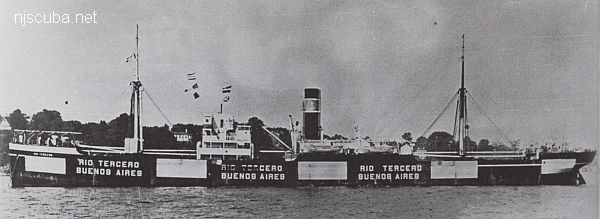Rio Tercero

- Type:
- shipwreck, freighter, Argentina
- Built:
- 1912, England, as Fortunstella
- Specs:
- ( 405 x 54 ft ) 4864 gross tons
- Sunk:
- Monday June 22, 1942
torpedoed by U-202 - 5 casualties - Depth:
- 400 ft ?
Completed in December 1912 as British Eboe for Elder Dempster Lines Ltd, Liverpool. 1939 sold to Italy and renamed Fortunstella for Fratelli Rizzuto, Naples. In June 1940 interned at Necochea and on 25 Aug 1941 seized by Argentina and renamed Rio Tercero.

At 12:34 hours on 22 June 1942, the unescorted and neutral Rio Tercero was hit by one of three torpedoes from U-202 and sank slowly about 120 miles off New York. Linder reported that the ship displayed no neutrality markings and was recognized as Argentinian only after the attack when questioning the survivors.
3500 tons of general cargo, including coal and mail

Questions or Inquiries?
Just want to say Hello? Sign the .